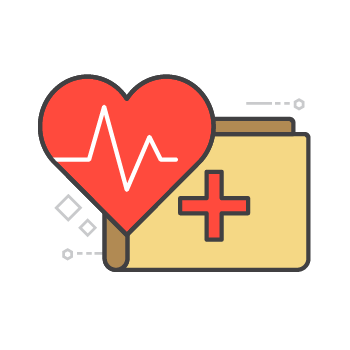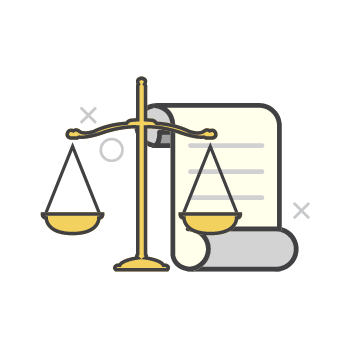Women’s Health: Three Common Mental Health Illnesses That Affect Women
by Carolyn Lee Jun 21, 2021

Mental illness is still stigmatised in many countries globally.
According to the World Health Organization (WHO), “although mental illness is common, it is still under-diagnosed by doctors”. Mental illness or psychiatric disorder affect men and women, however, there are notable gender differences in the patterns of mental illness.
Three of the most common mental illnesses that predominately affect women are depression, eating disorders and panic disorders. We are breaking down some of the possible causes, symptoms and when to get help.
Depression
Depression is a serious medical illness that can cause persistent feelings of disinterest or sadness. It impacts how you think, feel and behave. Depression is also the most common mental health problem that affects women.
During episodes of depression, symptoms occur nearly every day and for most of the day. Symptoms of depression include anxiety, loss of appetite, tiredness, feelings of sadness, emptiness or hopelessness.
Other symptoms include angry outbursts, increased fatigue, recurring thoughts of death or suicidal thoughts or attempts; feelings of worthlessness or difficulty concentrating. Depression may be caused by environmental issues such as neglect, abuse or poverty.
This mental illness may also be caused by genetics or biochemistry where there are differences in certain chemicals in the brain. Pessimistic persons and people with low self-esteem are also vulnerable. Some persons dealing with depression may require long term professional help.
Eating Disorders
Eating Disorders (ED) are severe health conditions that are characterised by irregular eating habits and extreme distress or obsession with weight or body shape. These disorders often require the intervention of medical and psychological experts.
These disorders are typically more common in adolescents and young women. The most common eating disorders include anorexia nervosa, bulimia nervosa, and binge-eating disorder.
Anorexia nervosa is potentially life-threatening. Persons struggling with this disorder may experience an intense fear of gaining weight, an abnormally low body weight, and a distorted perception of weight or shape. Persons dealing with anorexia use often use unhealthy methods to lose weight, such as vomiting after eating, using laxatives or diet aids, or excessive exercise.
Their efforts to reduce weight, even when underweight, can cause severe health problems (self-starvation).
Bulimia nervosa may develop during the adolescent years and tends to affect more women than men. People with bulimia may binge eat large amounts of food, which often includes food they would typically avoid eating.
After the binge, individuals with bulimia try to compensate for the calories consumed or purge to relieve gut discomfort. Methods of purging include fasting, excessive exercise, the use of laxatives, forced vomiting, and diuretics.
Binge Eating Disorder (BED) manifests as an inability to regularly control one’s eating. Unlike bulimia nervosa, episodes of binge-eating are not followed by purging behaviours.
Some people struggling with this disorder may be obese and are at an increased risk of developing cardiovascular disease. These persons may also experience intense feelings of guilt, distress, and embarrassment related to their binge-eating.
Some of the common risk factors for eating disorders include stress, dieting or starvation, family medical history, or other mental illness (depression, anxiety or obsessive-compulsive disorder). Persons struggling with ED can cause harm to the digestive system, bones, and heart, as their behaviours can affect the body’s ability to get appropriate nutrition.
Eating disorders can result in other diseases and in critical cases, may lead to serious health challenges. If left untreated, a serious eating disorder may even result in death.
Panic Disorders
A panic attack is an abrupt feeling of intense fear that may trigger severe physical reactions. Some of its symptoms include heart palpitations, chest pains, fear of dying or losing control, difficulty breathing and trembling.
Panic attacks cannot be predicted and may even occur during sleep. Recurring and unexpected panic attacks can result in a panic disorder.
Specific types of phobias and General Anxiety Disorder (GAD) are types of panic disorders that are common among women. Other types of panic disorders include social anxiety and post-traumatic stress disorder (PTSD).
Each type of panic disorder has its causes or triggers. Agoraphobia and simple phobia are more common in women. Agoraphobia deals with the fear of being outside or situations that may cause panic, while simple phobia involves unfounded fear caused by a specific object, animal, activity or situation.
GAD features episodes of panic that may last a few minutes, or a few hours. These episodes are usually accompanied by intense feelings of tension, worry, or urgency.
PTSD may result from a traumatic or tragic event such as death, rape, physical, accident, or other forms of abuse.
Panic disorder may be genetic. It is also linked to significant life changes such as starting college or a new job, getting married, having your first child or other major stressful changes.
If left unchecked, mental illness can lead to harmful behaviours for the affected individual and others. If you believe that you are struggling with symptoms of any mental illness outlined in this article, please speak with your healthcare provider immediately.
The content of this article is for informational purposes only. Search Find Yello for therapists, psychologists and other medical specialists near you.
Sources: Dual Diagnosis, Women’s Health, WHO, Healthline and WeMD.








